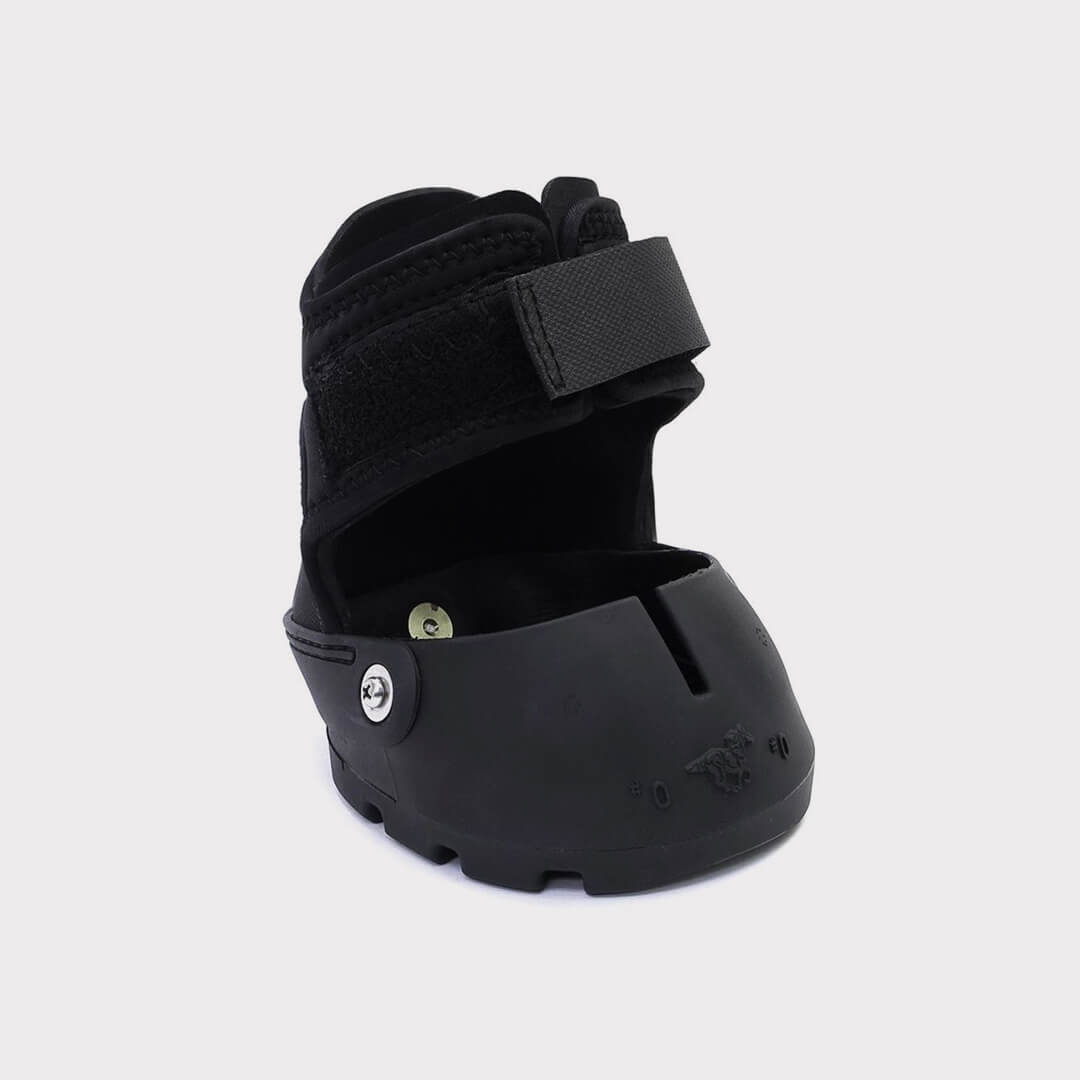Firstly when choosing hoof boots for barefoot horses, you need to establish the right size.
You should measure your horse or pony’s hooves within seven days of a fresh trim, taking the width and length in mm. Width is taken at the widest point of the hoof (normally approximately halfway or slightly over halfway towards the heel from the toe). The length is taken to be the weight bearing surface of the hoof; do not include the frog/fleshy part of the heel.

Booting horses
We all know that while physical height and size typically determines whether or not an equine is considered a horse or a pony, their temperament and other aspects of their physical make-up also count! So it isn’t as easy as saying that horses are just bigger than ponies... having said that, for the purposes of fitting hoof boots, there are some generalisations that can be made!
Horses are usually (but not exclusively) 14.3hh and over. When in the mindset of their physiology (and therefore their feet) it is useful to remember that horses have traditionally been used (and bred) for a specific job - Draught horses tended to perform agricultural and haulage work, while the more hot-blooded equines were used for warfare, and later, sport.
Many leisure horses in the UK can probably be categorised as a riding or sports horse that is a combination of these heavy and light types of equine. Their feet are of average size an uuud the hoof boot manufacturers cater well to them. (Barefoot hooves that are rehabilitating from horse shoes and are still not the ideal size and shape can be trickier to fit hoof boots to, but the feet will improve with care.)
An increasingly popular mount in the UK is the Thoroughbred, notably as more are rehabbed form racing. Thoroughbreds arguably tend not to have the same durable hooves of other breeds. American Farrier Dave Scheffel told the racing website paulickreport.com that most modern-day Thoroughbreds’ feet have walls that are thin, with feet that are on the brittle side. “Many of them have a graduated heel, meaning one front hoof will grow heel more than the other during a shoeing cycle,” he says.
It could be argued however that the Thoroughbred is the ideal horse to take barefoot, as this equine could really benefit from the barefoot lifestyle, given the physiological challenges of the feet that he may have been born with! (And the fact that if a racehorse, hoofcare with a natural bias may not have been a top priority for his care-givers).
The TB is also the ideal candidate for Comfort Pads that are used within hoofboots. Easycare’s 12mm comfort pads are ideal for horses with very flat or thin soles, and newly transitioning barefoot horses. comfort pads helps to condition and improve the digital cushion, and should be used with any hoof boot when working to improve the internal and external structures of the hoof.
Something like the Easyboot Glove, which goes up to 144-147mm wide and 154-157 long, is a popular boot for averagely sized horses, and includes a Wide version.
The choice of hoofboots for barefoot horses becomes smaller as the feet get larger! If you are booting up a horse that has hooves that are over 10mm wider than longer - which can be seen in fully transitioned Draught horses - the risk is that you will buy a boot that is realistically a size too large - so speak to the retailer or manufacturer about what boot would work best.














